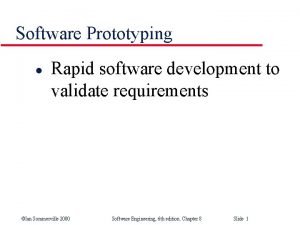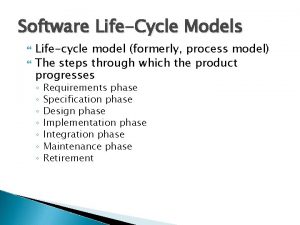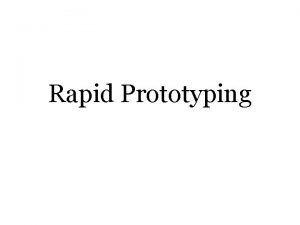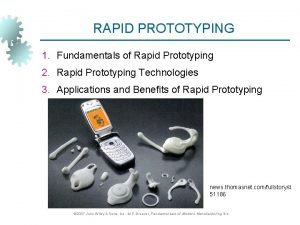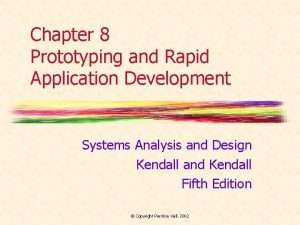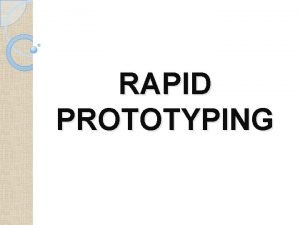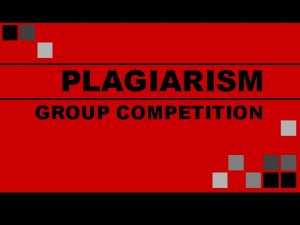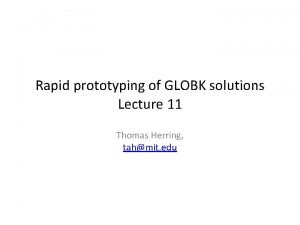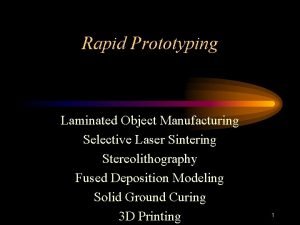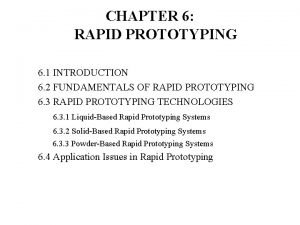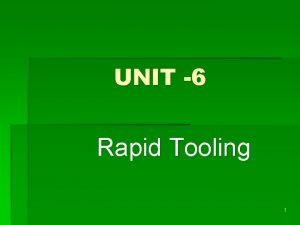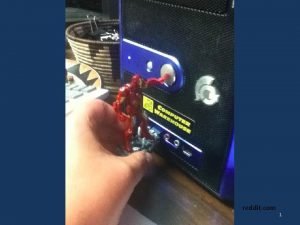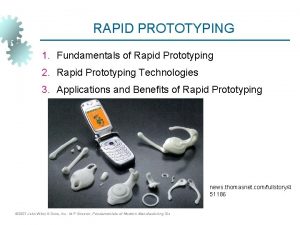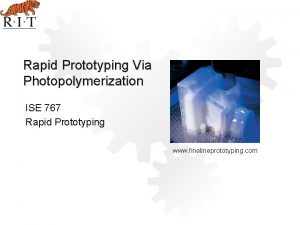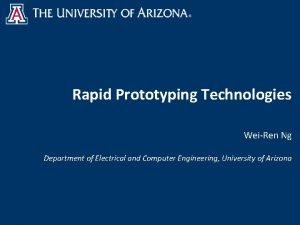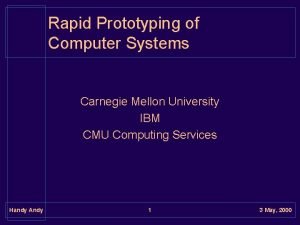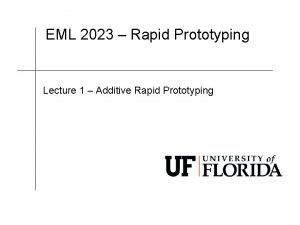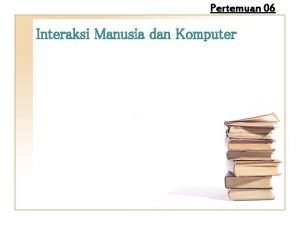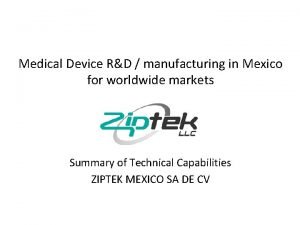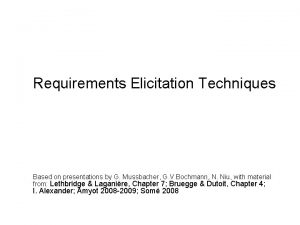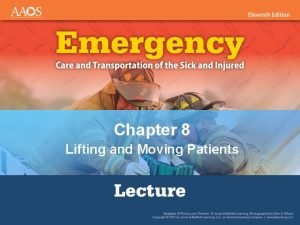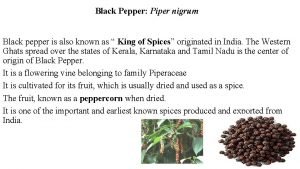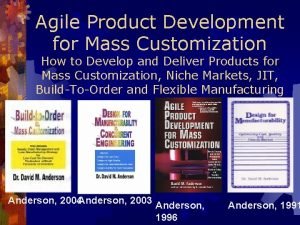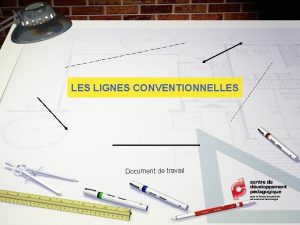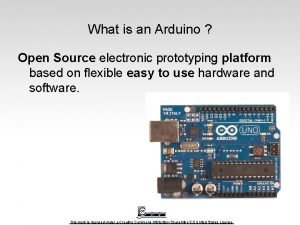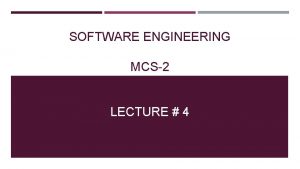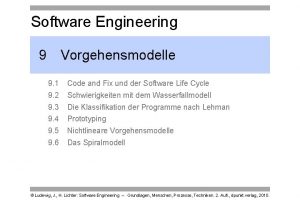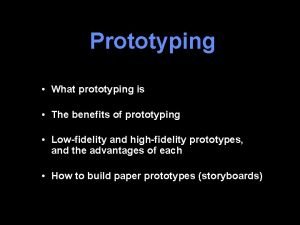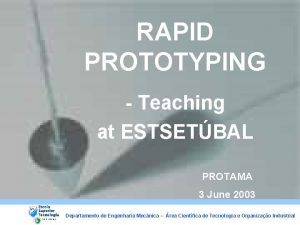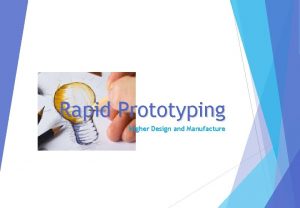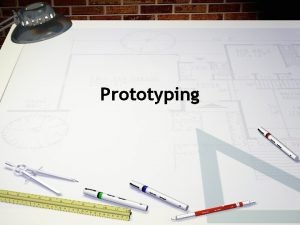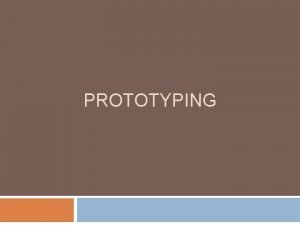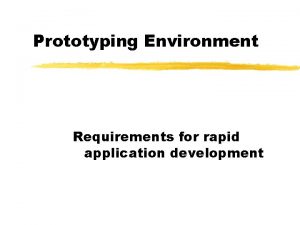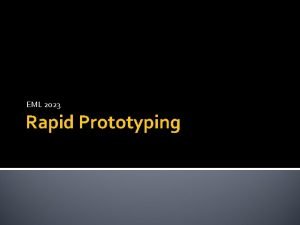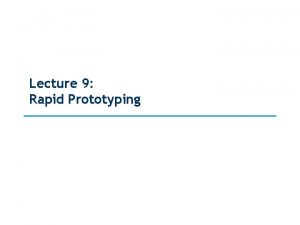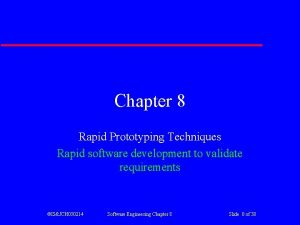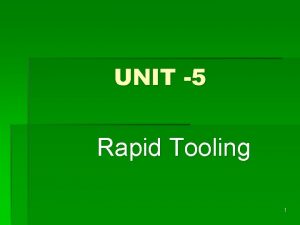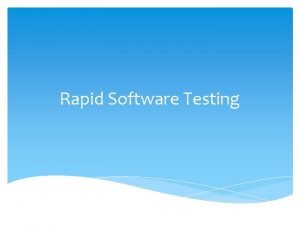TYPE TECHNIQUE OF RAPID PROTOTYPING RY 57 PRODUCT






























- Slides: 30

TYPE & TECHNIQUE OF RAPID PROTOTYPING RY 57 PRODUCT DEVELOPMENT PDT 234/3 RAPID PROTOTYPING 1 Prepared by Mohd Haidiezul Jamal b. Ab Hadi

TYPES OF RP RP LIQUID BASED SOLID BASED POWDER BASED

TYPE & TECHNIQUE OF RAPID PROTOTYPING LIQUID BASED RP PROCESSES

TYPE & TECHNIQUE OF RAPID PROTOTYPING

TYPE & TECHNIQUE OF RAPID PROTOTYPING LIQUID BASED SLA ( STEREOLITOGRAPHY APPARATUS ) MASK BASED PROCESS INJECT BASED LIQUID PROCESS RAPID FREEZE PROTOTYPING PROCESS

TYPE & TECHNIQUE OF RAPID PROTOTYPING SLA ( STEREOLITHOGRAPHY APPARATUS ) • First commercialized RP process • It works on principle of solidifying a photosensitive resin using UV laser light layer-by -layer to develop 3 D object • Uses EPOXY photocurable resin that can. ACRYLATE be classified VINYLETHER as an :

TYPE & TECHNIQUE OF RAPID PROTOTYPING SLA PROCESS • Converts 3 D computer image data into a series of very thin cross section • A vat of photosensitive resin contains a vertically moving platform • Part under construction is supported by the platform that moves downward by a layer thickness ( typically about 0. 1 mm ) for each layer • A laser beam then traces a single layer onto surface of a vat of liquid polymer. • The ultraviolet light causes the polymer to harden precisely at the point where the light hit the surface.

• INTRODUCTION TO RAPID PROTOTYPING UNIQUENESS • Resolution • Accuracy • End product is very close to physical model • Very stable and has a good dimensional accuracy.

TYPE & TECHNIQUE OF RAPID PROTOTYPING DISADVANTAGE ? • Water absorprtion into the resin overtime in thin areas will result in curling warping. • System cost is high • Material available only photosensitive resin • Often parts cannot be used for durability and thermal testing • Most cases, parts have not fully cured

TYPE & TECHNIQUE OF RAPID PROTOTYPING Limitation • Parts with enclosed and hollow structures are problems as the liquid may be trapped inside the enclosed body during building • The areas of applications are restricted due to given material properties

TYPE & TECHNIQUE OF RAPID PROTOTYPING SOLID BASED RP PROCESSES

TYPE & TECHNIQUE OF RAPID PROTOTYPING

TYPE & TECHNIQUE OF RAPID PROTOTYPING EXTRUSION BASED PROCESS • Extrusion based process feeds material in solid wire form and then melts it into a shape and form a solid.

TYPE & TECHNIQUE OF RAPID PROTOTYPING FDM • FDM stand for Fused Deposition Modeling is a process was originally developed by Advanced Ceramics Research (ACR ) in Tucson , Arizona but the advanced by Stratasys. • Non Laser filament extrusion process that utilizes engineering thermoplastics.

TYPE & TECHNIQUE OF RAPID PROTOTYPING PROCESS • The extrusion-based process utilizes filament molten thermoplastic that are extruded from a heated tip to build up layers comprising the physical model.

TYPE & TECHNIQUE OF RAPID PROTOTYPING 5 STEPS • Starting with the filament being fed into drive wheels • The drive wheels force the filament into liquefier • The heater block the filament • The solid filament used as a linear piston • The melted filament is forced through a tip.

TYPE & TECHNIQUE OF RAPID PROTOTYPING

MATERIAL IN 3 D PRINTER (FDM) PLA PVA HIPS PLA ABS The two main plastic types used in small scale 3 D Printing. These are thermoplastic, able to be heated , molded, and cooled

PLA ( POLYLACTIC ACID ) PLA is a biodegradable thermoplastic aliphatic polyester derived from renewable source such as corn starch Plastic choice for many 3 D printer users Easy to use, fast to print, affordable and glossy surface finish Advantage of handling large prints due to its ability to holds its shape while cooling Disadvantage is that susceptible to UV damage and deform under heat ( above 60 degree Celsius )

ABS (ACRYLONITRILE BUTADIENE STYRENE) ABS is a common thermoplastic polymer. Largely used in various application such manufacturing, automotive components Well known for strong, flexible, and durable and it can survive UV, water Great for end-use components and functional parts Disadvantage is that slightly difficult to print from which can result in longer lead times Do not large object effectively as PLA does ( Parts greater than 180 mm wide )

ABS Non brittle Heat/Water/UV resistant Used in functional parts Not ideal for large parts Recommend for : Functional end-use parts, Environment resistance PLA Reliable Large Prints Weak to High temperatures Recommend for : Prototypes, props, model

ABS PLA Scientific Designation Produced From Petroleum Plant starch Properties Durable Strong Slightly flexible Heat resistant Tough Strong Extruder temp 210 - 250°C 160 - 220°C Post processing Easy sanding Easy glueing Easily soluble in acetone Sanding possible Limited glueing Pro Smooth finish Solidifies quickly Durable and difficult to break Ideal for mechanical parts Bioplastic – good environmental properties Good smell when heated Nontoxic No heated printbed necessary High print speed and resolution Less warping or shrinking issues Ideal for small parts Hard or soft/flexible variants Cons Petroleum-based Non-biodegradable Heated printbed necessary Fumes Deterioration through sunlight Slow cooling down Low heat resistance Easier to break then ABS Needs thicker walls then ABS

TYPE & TECHNIQUE OF RAPID PROTOTYPING SUPPORT

TYPE & TECHNIQUE OF RAPID PROTOTYPING WHAT SUPPORT DO? • Support structures play an integral role in printing parts • They allow for a wide variety of complex and detailed parts to be printed. • Support structures can be thought of as scaffolding; they allow for construction of parts and are removed afterwards.

TYPE & TECHNIQUE OF RAPID PROTOTYPING SUPPORT MATERIAL • Selection of material for support is important. • The use of water soluble material is very convenient as it easy to remove those structures. • The ultrasonic based water soluble material is very noisy, and thus should be placed in an isolated room.

TYPE & TECHNIQUE OF RAPID PROTOTYPING REMOVE SUPPORT • Support material may be removed in two different ways. • BASS stands for Break Away Support Structure. • The support is broken away manually and the model is cleaned with sand paper and tools. • Water. Works is a method that removes the support material automatically in a water based solution.

TYPE & TECHNIQUE OF RAPID PROTOTYPING REMOVING SUPPORT MATERIAL ULTRASONIC TANK ULTRASONIC CLEANING involves the use of high-frequency sound waves (above the upper range of human hearing, or about 18 k. Hz) to remove a variety of contaminants from parts immersed in aqueous media. It basically a combination of high frequency sound wave and an appropriate cleaning solvent. This technique was used to remove support material from RP part

TYPE & TECHNIQUE OF RAPID PROTOTYPING ADVANTAGE • The extrusion based process is widely used in almost every industry: automotive, aerospace, business, commercial machines, medical, consumer products, architecture • The advantages of the extrusion based process include functional materials, including ABS and medical ABS, investment casting wax and elastromers.

TYPE & TECHNIQUE OF RAPID PROTOTYPING • Does not waste much material during and after producing the part. • It is also easy to use and safe, use inexpensive materials, fits on a desktop, produce non fragile parts and even use water soluble support material.

AUTOMOTIVE MEDICAL AEROSPACE EDUCATION ARCHITECTURE
 Méduce
Méduce Rapid prototyping in software engineering
Rapid prototyping in software engineering Synchronize and stabilize model
Synchronize and stabilize model Prototyping definition
Prototyping definition Liquid based rp system
Liquid based rp system Rapid prototyping wiki
Rapid prototyping wiki Rapid application development prototyping
Rapid application development prototyping Rp techniques
Rp techniques Rapid prototyping could be an advantageous methodology
Rapid prototyping could be an advantageous methodology Rapid prototyping
Rapid prototyping Lom rapid prototyping
Lom rapid prototyping Powder based rapid prototyping
Powder based rapid prototyping Waterfall 모델
Waterfall 모델 Copper polyamide rapid tooling
Copper polyamide rapid tooling Horizontal prototype vs vertical prototype
Horizontal prototype vs vertical prototype Solid ground curing diagram
Solid ground curing diagram Photopolymer
Photopolymer Rapid prototyping
Rapid prototyping Cmu rapid prototyping
Cmu rapid prototyping Uf eml 2023
Uf eml 2023 Pengertian rapid prototyping
Pengertian rapid prototyping Mexico rapid prototyping
Mexico rapid prototyping Prototyping elicitation technique
Prototyping elicitation technique Diamond carry ems
Diamond carry ems Panniyur 8
Panniyur 8 Agile product development for mass customization
Agile product development for mass customization Les lignes conventionnelles pdf
Les lignes conventionnelles pdf Open source electronics prototyping platform
Open source electronics prototyping platform Prototyping process in software engineering
Prototyping process in software engineering Wasserfallmodell royce
Wasserfallmodell royce What are the benefits of prototyping
What are the benefits of prototyping

